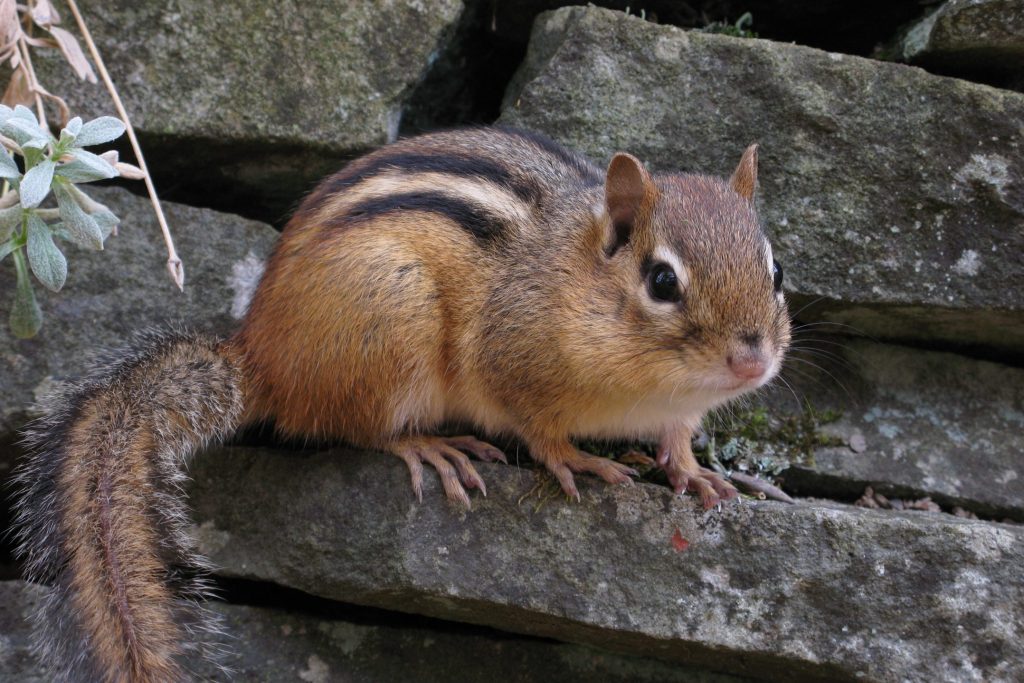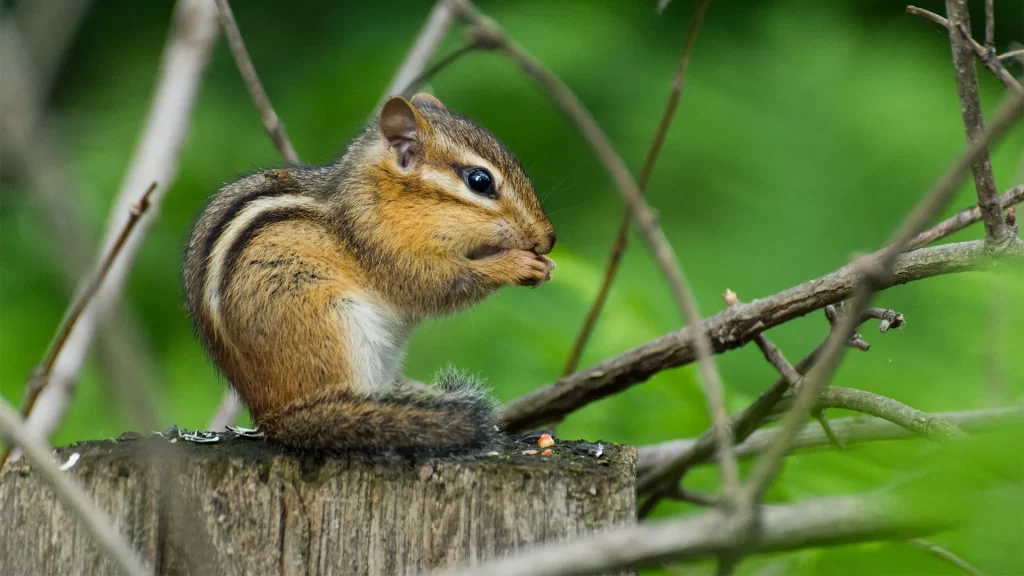Chipmunks are small, burrowing rodents that are native to North America. They are known for their unique coloration, including stripes on their backs and cheeks, and their energetic behavior. The life cycle of a chipmunk involves several stages, including breeding, pregnancy, birth, and maturation. Here is a detailed description of the life cycle of chipmunks:

Breeding:
Chipmunks breed once or twice a year, usually in the spring and summer months. During this time, male chipmunks will compete with each other for the attention of females. They will engage in chasing, fighting, and vocalizations to establish dominance and attract mates. Once a male has attracted a female, they will mate and then go their separate ways.
Pregnancy:
After mating, the female chipmunk will typically have a gestation period of 31 to 32 days. During this time, she will gather food and prepare a nest for her young. Chipmunks are known for their elaborate burrows, which can have multiple entrances, chambers, and tunnels. The female will prepare a nest chamber at the end of one of these tunnels, where she will give birth to her young.
Birth:
Chipmunks typically have litters of 2 to 8 young, depending on the species. The young are born blind, hairless, and helpless. The mother will nurse them for several weeks, during which time they will grow rapidly and develop their fur, teeth, and eyesight. The mother will also teach them how to find food and avoid predators.

Maturation:
As the young chipmunks mature, they will start to venture out of the nest and explore their surroundings. They will learn how to forage for food, communicate with each other, and establish their own territories. Chipmunks typically reach sexual maturity at around 4 to 5 months of age, at which point they will start to breed and continue the cycle of life.
Life expectancy:
The life expectancy of a chipmunk varies depending on the species and environmental factors. On average, chipmunks can live for 2 to 3 years in the wild, though some may live longer in captivity. Factors that can influence their lifespan include availability of food, predation, disease, and environmental conditions.

In conclusion, the life cycle of chipmunks involves several stages, including breeding, pregnancy, birth, and maturation. Chipmunks typically breed once or twice a year, with the females giving birth to litters of 2 to 8 young. As the young chipmunks mature, they will learn how to forage for food, communicate with each other, and establish their own territories. Chipmunks have a relatively short lifespan of 2 to 3 years in the wild, but they are an important part of the ecosystem and a beloved creature of many people.